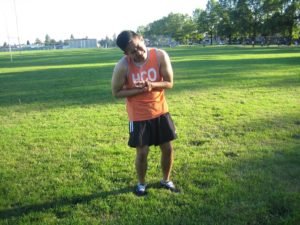Some individuals experience wrist pain after lifting heavy weights. For those who lift heavy weights, wrist pain can lead to the weakening of the grip and take away the focus from the exercise. If the individual developed pain in the wrists after weight lifting, it can be an indication of a strained tendon or ligament or even a fracture. It is vital to consult a doctor so that an accurate diagnosis can be given to prevent further damage and start the right treatment.
In case the wrist pain is only minimal and there is no evident reddening or swelling or piercing pain, it is an indication to stop right away. The individual should rest or modify the workout to help minimize stress on the affected wrist if possible.
Close look on wrist pain
Once the wrist pain only manifests when using weights or during physical activities, it is likely a stressed ligament or tendon or other tissues in the wrist. If the wrist pain is persistent along with some swelling and tenderness, it simply indicates a fracture.
Always bear in mind that there are 8 bones in the wrist and a fracture occurs with any injury and usually a fracture develops with any fall-related injury where an individual with a drawn-out hand hits a hard surface. Nonetheless, stress fractures that are quite prevalent in the legs and feet can also occur in the wrists due to misuse as well as tension on the joints.

Syndesmosis
Syndesmosis is a condition affecting the tissues that can lead to a sore wrist. It usually affects the interosseous tissue that keeps the 2 large-sized bones in the forearm stabilized when the arm and wrist are used. The strain while lifting weights can damage this tissue over time and trigger wrist pain.
Carpal tunnel syndrome
Carpal tunnel syndrome is a usual source of chronic wrist pain that occurs due to extensive hand use. Weightlifting even the light ones can worsen the condition. This cause the wrists to become sore and oftentimes with a tingling sensation.
This condition develops once the connective tissue surrounding the flexor tendons in the wrist are swollen. The swelling places pressure on the median nerve which results to pain, tingling pain and numbness especially in the thumb side of the hand and wrist.
A splint or brace can be used to keep the wrist in a neutral position, but this can limit what the individual can do while lifting weights. Cortisone injections can also be used to relieve the symptoms only. In cases of severe pain, surgery is performed which involves opening the “tunnel” where the tendons and tissue are located to reduce the pressure on the nerves.
Diagnosis and management
If the individual ends up with wrist pain after weightlifting, he/she must rest and apply an ice pack for a few days or a week before resuming activity. In doing so, it can help identify the problem.
Once the wrist pain subsides or milder when resuming activity, it is likely a strained ligament or tendon that was given time to heal. On the other hand, if the pain returns or if rest and cold therapy could not provide relief, it might be a tissue-related condition that requires further assessment.
The doctor will perform a physical examination along with an X-ray or MRI. The doctor will ask about potential triggers, measures that could provide relief, how long the individual started experiencing the pain and if the pain is an ache or sharp sensation.
